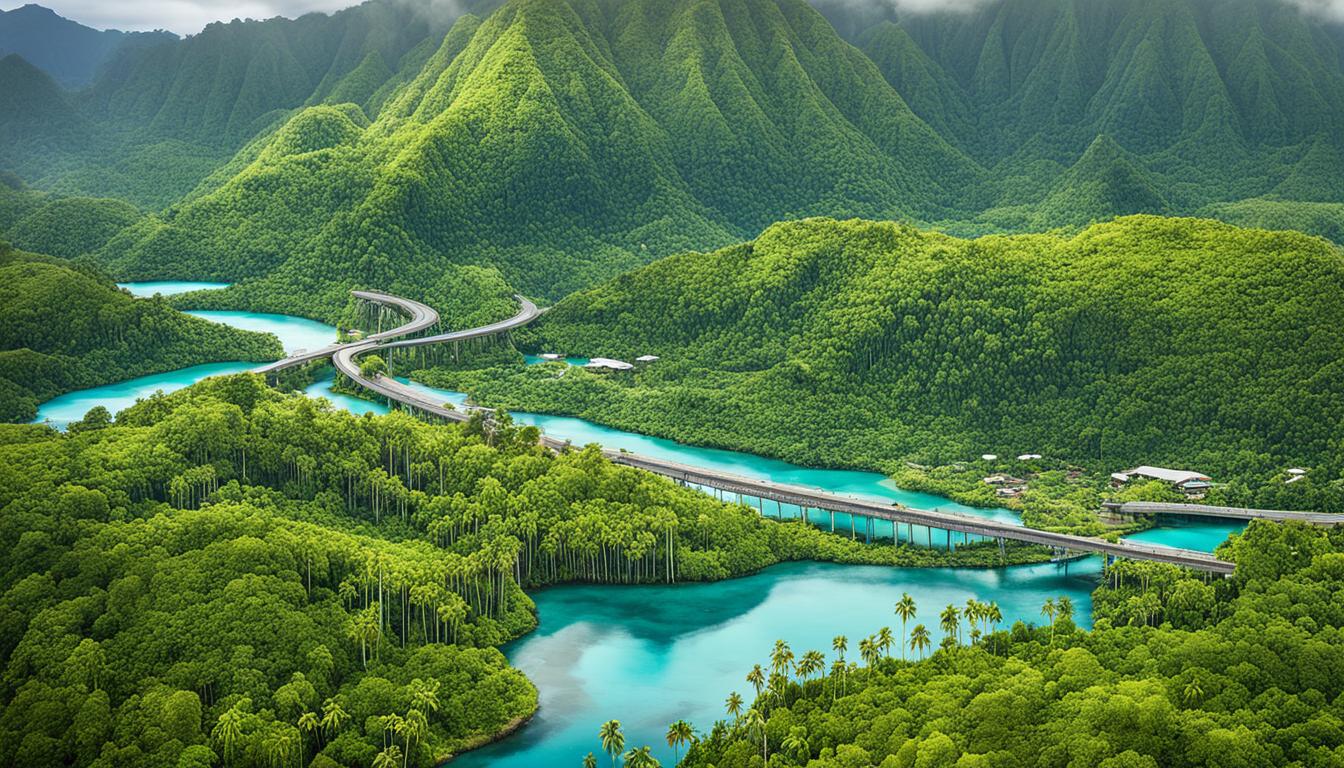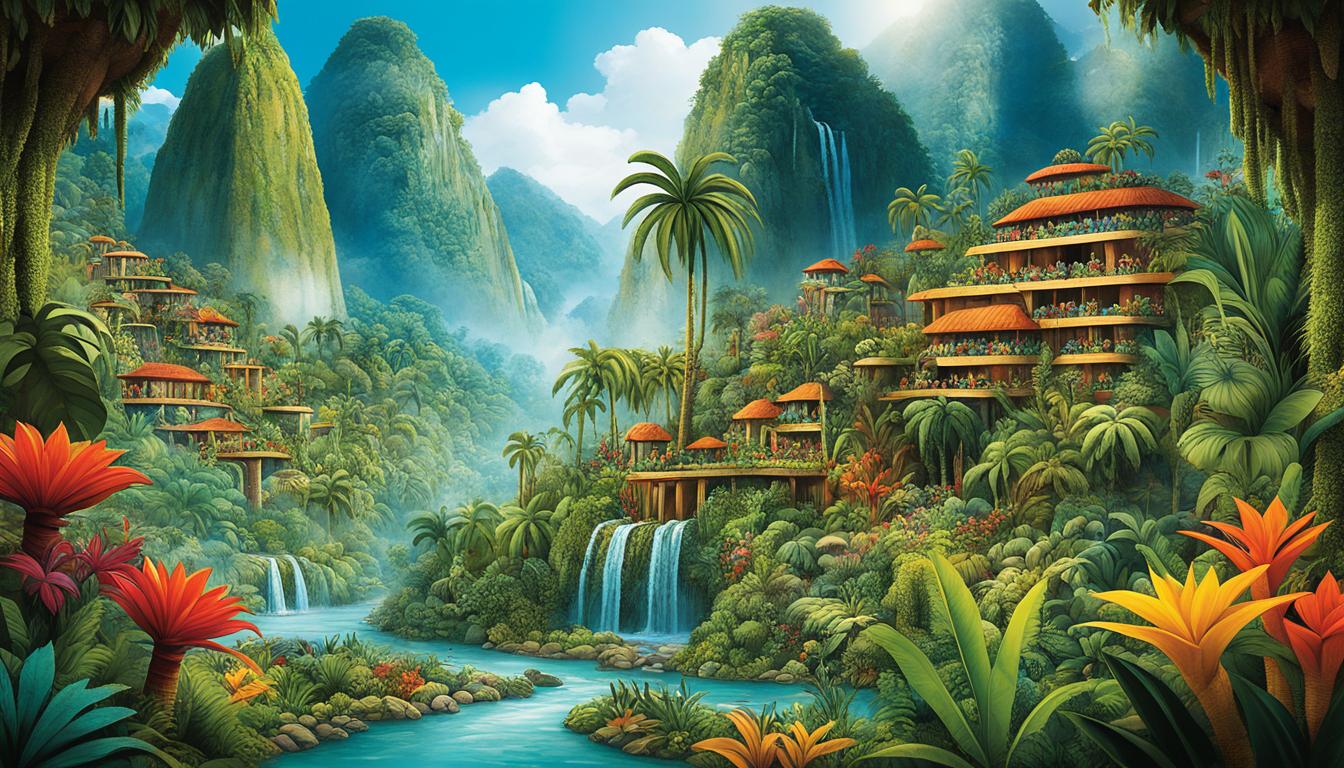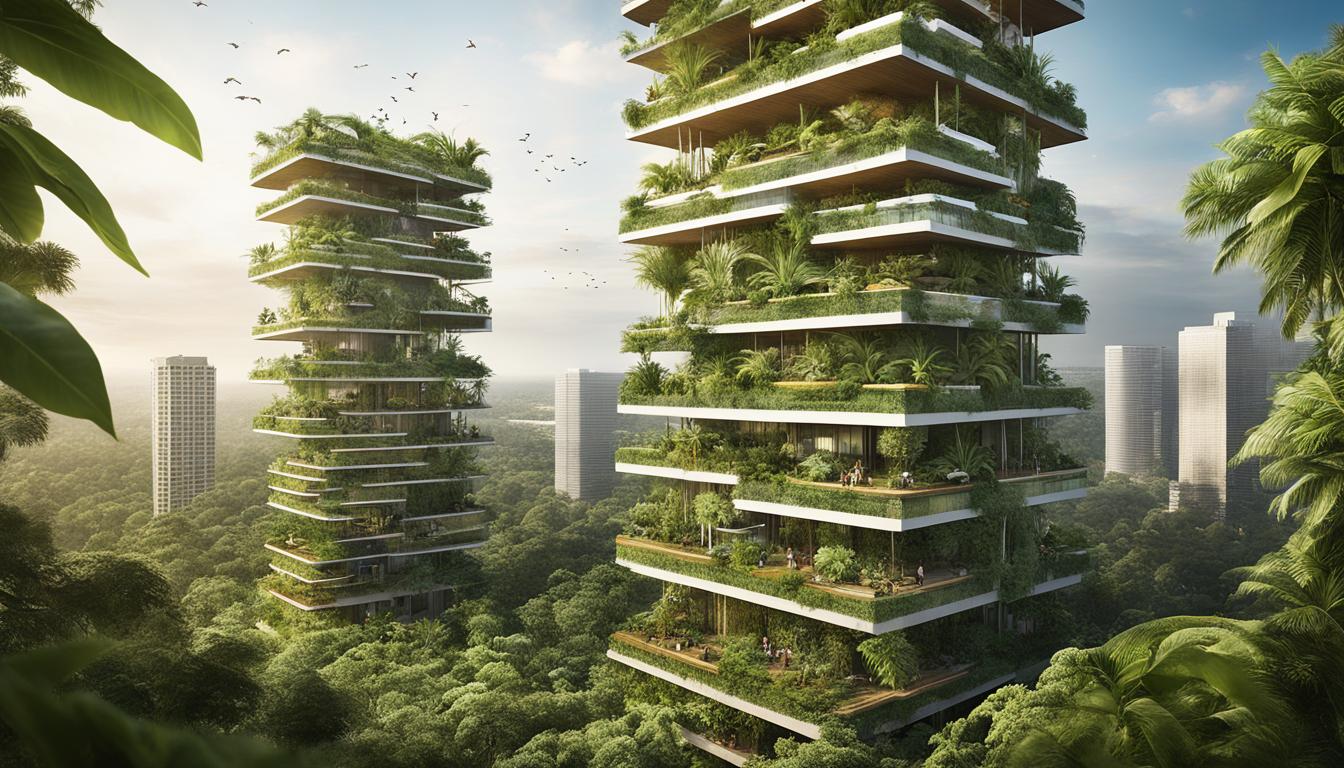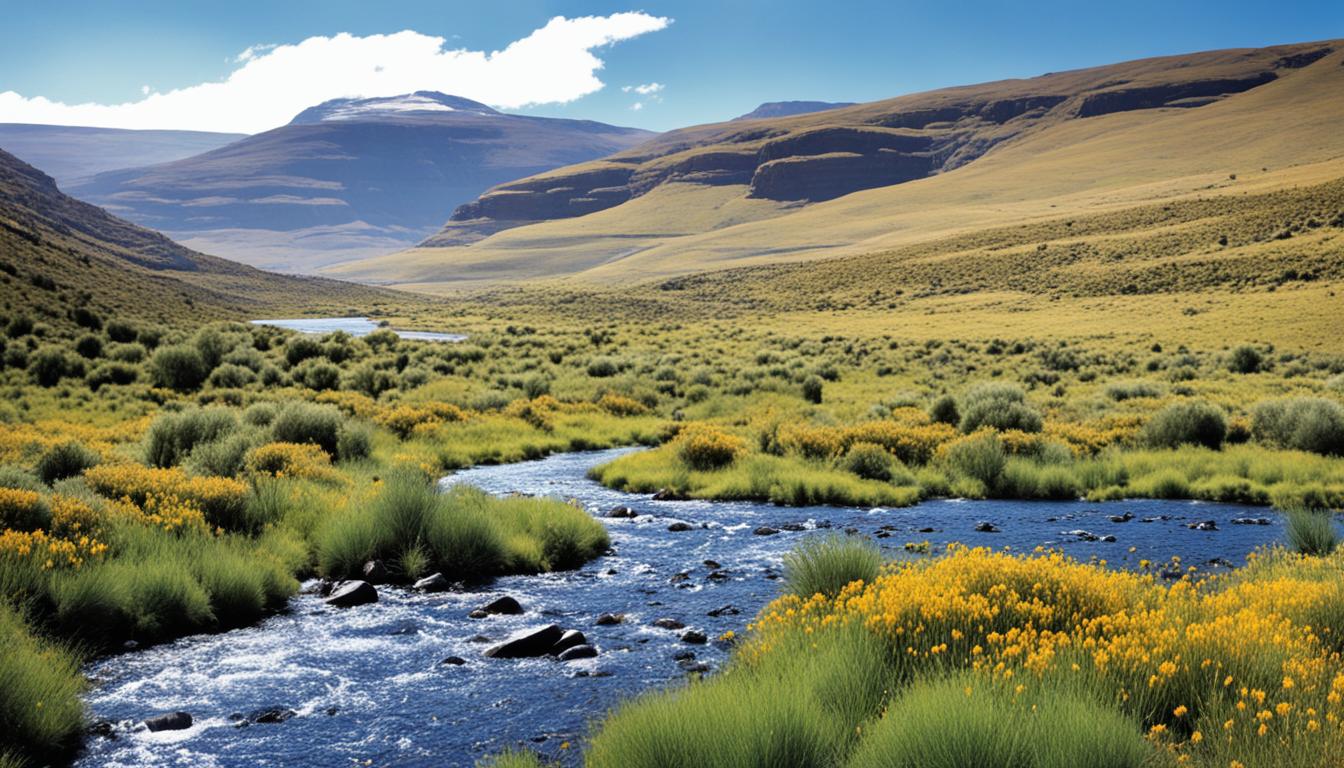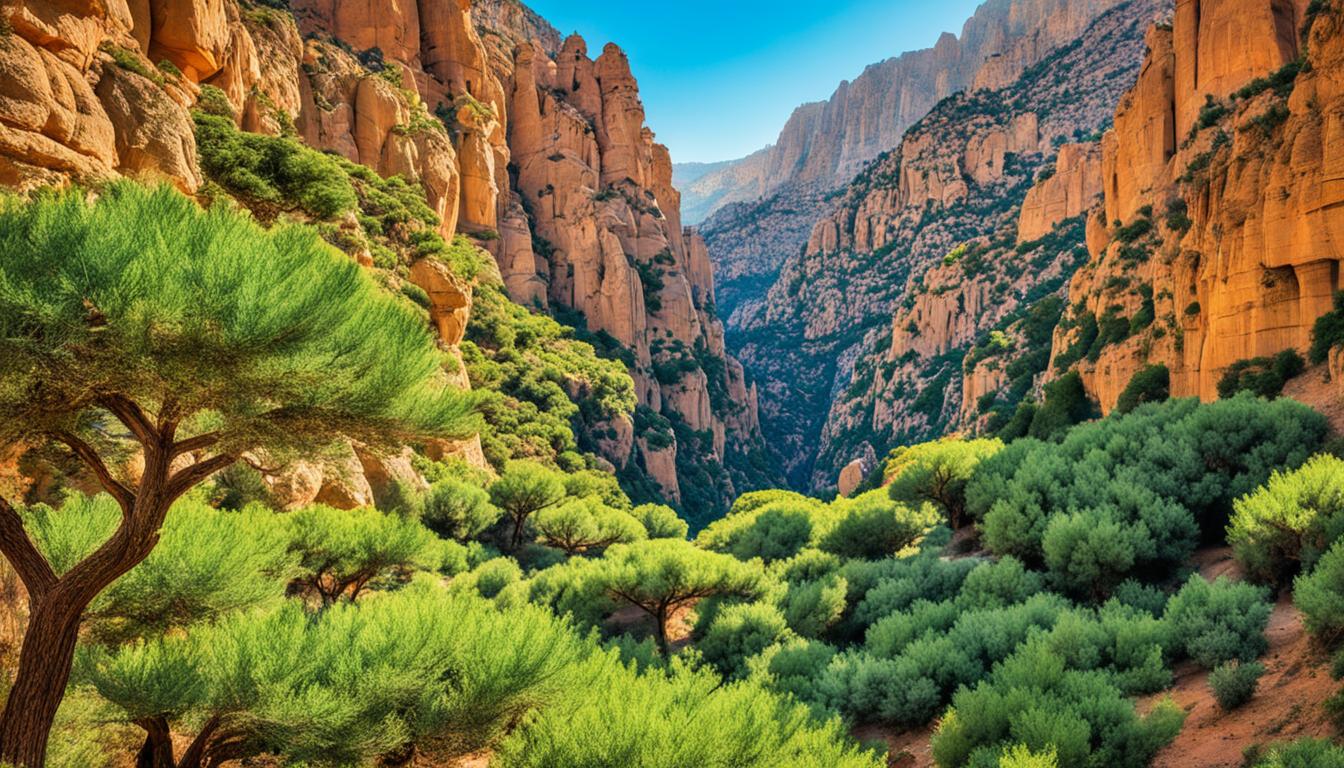Paraguay Biodiversity and the Built Environment
Did you know that Paraguay is home to approximately 13,000 plant species and 1,233 to 1,336 vertebrate species? This small South American country boasts a stunning array of flora and fauna, making it a biodiversity hotspot. However, Paraguay’s unique ecosystems are under threat due to urban development, deforestation, and other human activities. In this article, we will explore Paraguay’s conservation efforts, eco-friendly architecture, and sustainable design practices that aim to preserve nature while promoting urban development.
Key Takeaways:
- Paraguay is home to thousands of plant and vertebrate species, making it a biodiversity hotspot.
- The country faces threats to its biodiversity due to urban development, deforestation, and other human activities.
- Paraguay is implementing conservation efforts, establishing protected areas, and promoting sustainable design practices.
- Eco-friendly architecture in Paraguay showcases a fusion of traditional and contemporary design ideas.
- By prioritizing biodiversity conservation and sustainable practices, Paraguay is working towards a greener and more environmentally-friendly future.
Paraguay’s Unique Flora
Paraguay is a treasure trove of unique flora, boasting an impressive array of plant species and a high level of endemism. With approximately 13,000 plant species, Paraguay’s plant diversity is a testament to the country’s rich natural heritage.
In fact, 69% of these plant species can only be found within Paraguay’s borders, making them truly special and exclusive to the region.
Paraguay’s flora demonstrates remarkable adaptability to various habitats and climates. From the vibrant foliage of lush forests to the hardiness of arid regions, the plant life in Paraguay showcases nature’s ability to thrive under diverse conditions.
Among the standout species is the Paraguayan Orchid, known for its exquisite beauty and delicate petals. This orchid is a symbol of Paraguay’s floral richness and has captured the fascination of botanists and nature enthusiasts alike.
The Yvoty tree, with its majestic presence and towering height, is another remarkable species that graces Paraguay’s landscapes. Its grandeur is a testament to the resilience and longevity of Paraguay’s native trees.
The Arazá tree, with its vibrant fruit and aromatic leaves, is a beloved species in Paraguay and has cultural significance as well. It serves as a source of nourishment for both humans and wildlife, exemplifying the interdependence between flora and fauna.
“Paraguay’s flora is a testament to nature’s ingenuity and adaptability. From the vibrant Paraguayan Orchid to the towering Yvoty tree, these species contribute to the unique biodiversity that thrives in Paraguay’s diverse ecosystems.”
The Saguaro cactus, although more commonly associated with arid regions, can also be found in Paraguay. Its iconic shape and towering stature make it a sight to behold amidst the country’s varied landscapes.
The diverse flora in Paraguay plays a vital role in maintaining the balance of ecosystems and providing habitat for a wide range of wildlife species. These plants are essential for the survival and well-being of countless organisms, ensuring the longevity of Paraguay’s rich natural heritage.
| Plant Species | Description |
|---|---|
| Paraguayan Orchid | A beautiful orchid endemic to Paraguay, known for its exquisite beauty and delicate petals. |
| Yvoty tree | A majestic tree that towers over Paraguay’s landscapes, a symbol of resilience and strength. |
| Arazá tree | A beloved species in Paraguay, known for its vibrant fruit and aromatic leaves. |
| Saguaro cactus | An iconic cactus species that thrives in Paraguay’s arid regions, exhibiting a unique shape and stature. |
Diverse Habitats and Adaptations
Paraguay’s flora adapts to a wide range of habitats and climates, showcasing nature’s ability to thrive under diverse conditions. From the lush forests to the arid regions, these plants have evolved specific characteristics to survive and flourish in their respective environments.
For instance, in the dense forests, plants compete for sunlight, resulting in taller growth forms and large leaves to capture as much light as possible. Meanwhile, in the arid regions, plants have developed mechanisms to conserve water, such as succulent leaves and water-storing tissues.
This remarkable diversity in adaptation contributes to the intricate web of life in Paraguay, ensuring the survival of flora, fauna, and the overall health of the ecosystems.
Paraguay’s Diverse Fauna
Paraguay is a haven for an incredible array of fauna, boasting approximately 1,233 to 1,336 vertebrate species. This rich biodiversity includes a diverse range of fish, amphibians, reptiles, birds, and mammals, each playing a vital role in the country’s ecosystems.
However, amid this remarkable variety, certain species face the imminent threat of extinction. The delicate balance of Paraguay’s ecosystems relies on the protection and preservation of its diverse wildlife. By safeguarding these vulnerable species, we can ensure a sustainable future for both the fauna and the environment they call home.
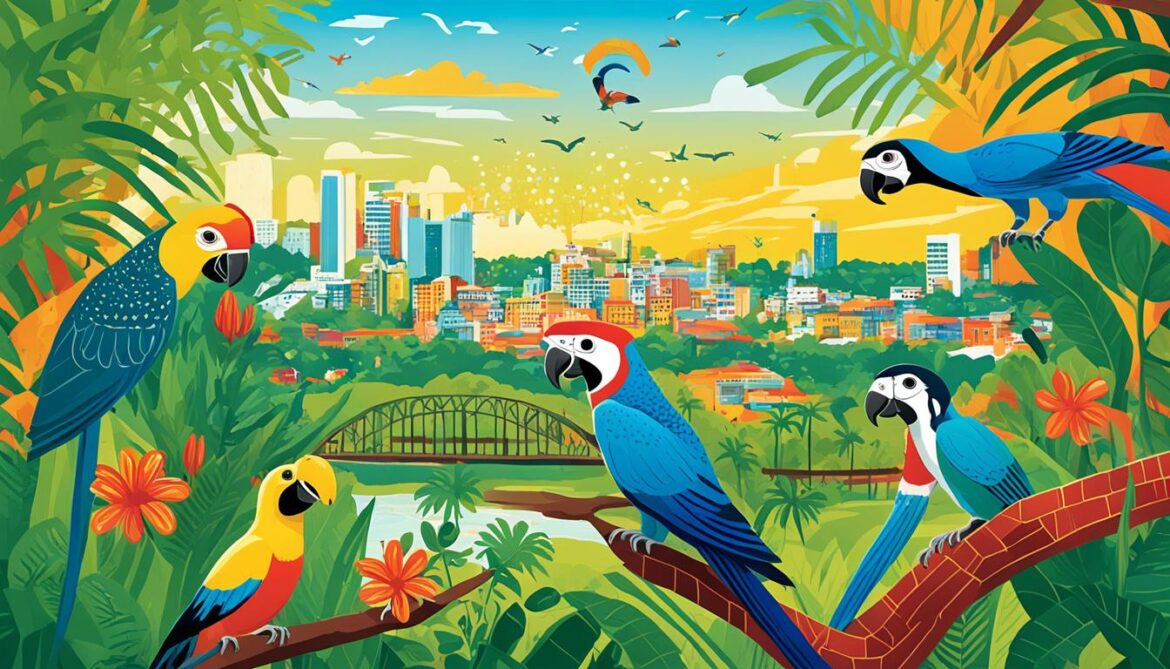
Threatened Vertebrate Species in Paraguay
| Category | Number of Threatened Species |
|---|---|
| Fish | 54 |
| Amphibians | 32 |
| Reptiles | 21 |
| Birds | 39 |
| Mammals | 46 |
Table: Number of Threatened Vertebrate Species in Paraguay
Source: IUCN Red List of Threatened Species
Threats to Biodiversity in Paraguay
Paraguay’s biodiversity is under significant threat from various factors that pose risks to its delicate ecological balance and diverse ecosystems. These threats include:
- Changes in Land Use: The conversion of natural habitats for agriculture, infrastructure development, and other human activities is a major threat to biodiversity in Paraguay. The alteration of land use leads to the loss and fragmentation of natural habitats, affecting the survival of many species.
- Deforestation: Paraguay has experienced extensive deforestation, primarily driven by commercial agriculture, logging, and expansion of livestock production. Deforestation results in the destruction of forests, which are crucial for maintaining biodiversity and providing habitat for wildlife.
- Urban Expansion: Rapid urbanization and the expansion of cities in Paraguay encroach upon natural habitats, displacing native species and disrupting the ecological balance. The conversion of land for urban development contributes to the loss of biodiversity.
- Illegal Hunting: Unsustainable hunting practices, including poaching and illegal trade, threaten many wildlife species in Paraguay. Targeted hunting of endangered and threatened species can lead to population declines and disrupt the natural balance of ecosystems.
- Invasive Species: The introduction of invasive species, both plant and animal, can have devastating effects on native ecosystems by outcompeting native species for resources and altering the natural habitats. Invasive species pose a significant threat to the biodiversity of Paraguay.
These threats undermine the stability and resilience of Paraguay’s ecosystems and jeopardize the survival of numerous plant and animal species. Efforts are being made to address these challenges through:
- Sustainable Land Use Practices: Promoting sustainable agriculture and proper land management techniques that minimize the negative impact on ecosystems and biodiversity.
- Regulation Against Deforestation: Implementing and enforcing regulations and policies to curb deforestation and encourage responsible logging practices.
- Wildlife Conservation Laws: Enacting and strengthening laws and regulations that protect wildlife and their habitats, while promoting sustainable use and conservation.
- Invasive Species Management Strategies: Developing and implementing strategies to prevent the introduction and spread of invasive species, as well as methods to control and eradicate existing populations.
By addressing these threats and implementing sustainable practices, Paraguay aims to safeguard its biodiversity for future generations and ensure the long-term health and resilience of its ecosystems.
Protected Areas in Paraguay
Paraguay is committed to conserving its rich biodiversity through the establishment of protected areas. These areas serve as havens for diverse habitats and species, ensuring their preservation for future generations. With a total of 38 protected areas, Paraguay demonstrates its dedication to nature conservation.
Among the notable protected areas in Paraguay are:
- Ybycuí National Park
- Defensores del Chaco National Park
- Itaipú Binational Biosphere Reserve
- Lago Yguazú Biological Reserve
- Ñacunday National Park
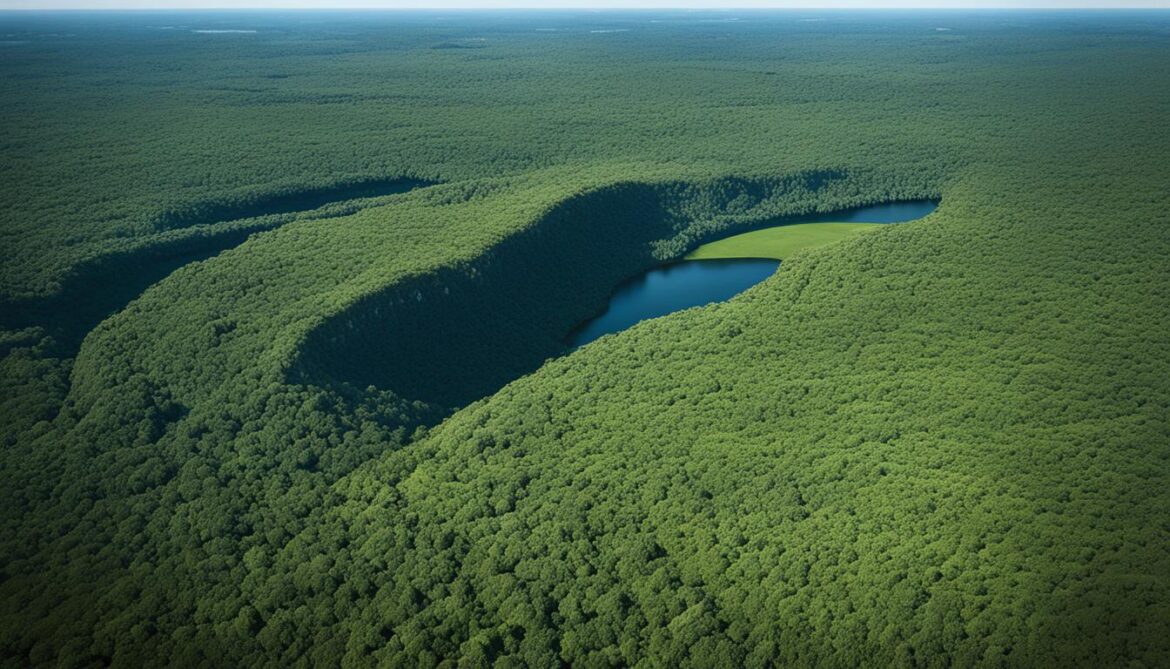
These protected areas encompass a range of ecosystems, from dense rainforests to vast savannahs, providing sanctuary to a wide variety of plants and animals. Through careful management and conservation efforts, Paraguay aims to safeguard its remarkable biodiversity.
In addition to national parks and reserves, Paraguay takes pride in its Ramsar sites. These internationally recognized wetlands are of significant importance, serving as crucial habitats for migratory birds and supporting unique ecosystems.
The protected areas in Paraguay are crucial for conserving the country’s biodiversity and preserving its natural heritage for generations to come.
National Biodiversity Strategy and Action Plan
Paraguay recognizes the importance of conserving its rich biodiversity and has developed a comprehensive National Biodiversity Strategy and Action Plan to guide its conservation efforts. This plan involves coordinated actions by various stakeholders, including the government, civil society, indigenous communities, private sector, and educational institutions.
The objectives of the National Biodiversity Strategy and Action Plan are multi-fold. Firstly, it aims to conserve and protect the diverse species that call Paraguay home. By implementing measures to safeguard these species and their habitats, Paraguay is taking proactive steps towards biodiversity conservation.
Secondly, the plan emphasizes sustainable resource management practices. With the growing need to balance economic development with environmental preservation, Paraguay is committed to ensuring that its natural resources are utilized in a sustainable manner. This includes promoting responsible land use, reducing deforestation, and implementing wildlife conservation laws.
Lastly, the National Biodiversity Strategy and Action Plan focuses on environmental education. Recognizing the crucial role of awareness and education in fostering a culture of environmental stewardship, Paraguay aims to educate its citizens about the importance of biodiversity and sustainable practices. Environmental education initiatives will be carried out in schools, communities, and through public awareness campaigns.
“Sustainable resource management and environmental education are key pillars of Paraguay’s National Biodiversity Strategy and Action Plan. By actively involving various stakeholders, Paraguay is paving the way for effective biodiversity conservation and a greener future.”
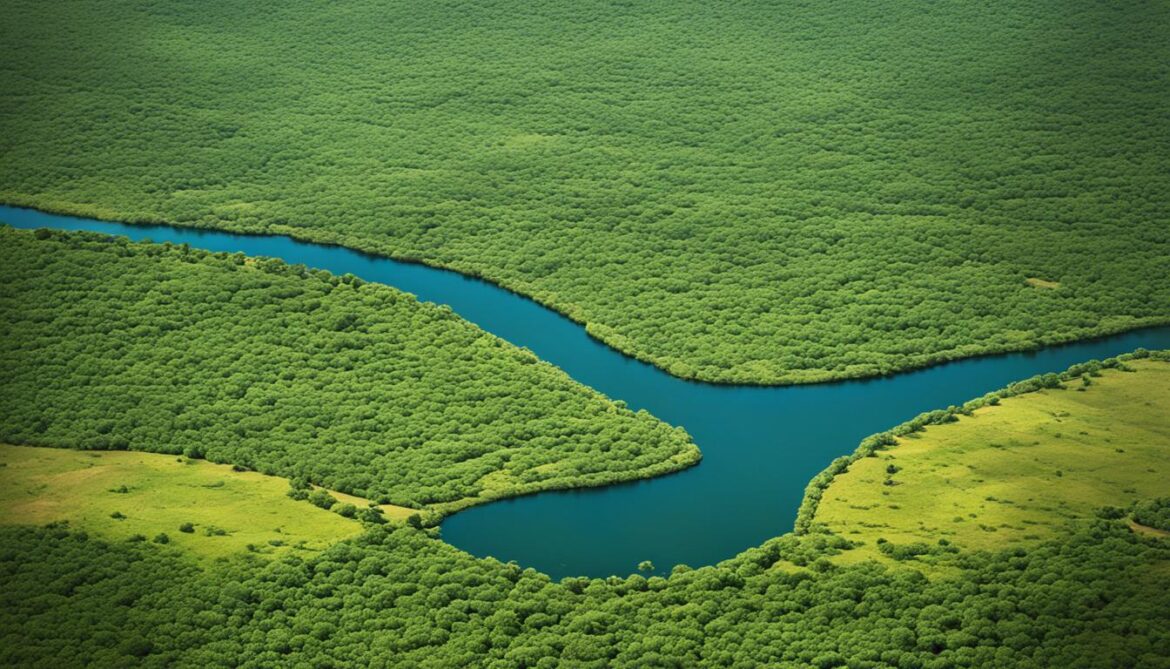
Paraguay’s Architectural Innovation
Paraguay is at the forefront of sustainable architecture and eco-friendly construction. Architects in Paraguay take inspiration from the country’s rich cultural heritage and natural landscapes to create exceptional modern buildings. These projects showcase the fusion of traditional and contemporary design ideas, delivering functional, sustainable, and visually stunning structures.
From residential homes to commercial spaces, sustainable architecture in Paraguay embraces innovative design principles that prioritize environmental consciousness and aesthetic appeal. By integrating environmentally-friendly materials, energy-efficient technologies, and thoughtful spatial planning, Paraguayan architects are redefining the concept of modern architecture.
One notable example is the Patios House in Asuncion, Paraguay. This sustainable residential masterpiece seamlessly combines the natural and built environments, emphasizing the importance of integrating nature into architectural design. The use of beams and open spaces creates a harmonious transition between indoor and outdoor areas, maximizing natural light and ventilation.

Another remarkable project is the Quincho Tia Coral pavilion in Asuncion. This innovative structure showcases a perfect blend of structure and pattern, creating captivating visual effects with light and shadow. The carefully designed spaces connect indoor and outdoor areas, offering a harmonious integration with the surroundings while maintaining a sustainable approach.
Architectural Innovations in Paraguay
Architects in Paraguay continue to push the boundaries of innovative design, incorporating eco-friendly construction techniques and sustainable practices into their projects. These groundbreaking designs not only enhance the built environment but also contribute to the preservation of Paraguay’s natural beauty and resources.
| Project | Description |
|---|---|
| Puma Energy Paraguay Headquarters | This modern office building seamlessly blends green spaces with the urban context, creating an aesthetically pleasing and sustainable workspace. |
| La Mundi Design Hotel | This boutique hotel embraces sustainable design through the use of renewable energy sources, green roofs, and locally sourced materials. |
| Asuncion Convention Center | Designed with energy-efficient systems and eco-friendly materials, this convention center showcases Paraguay’s commitment to sustainable development. |
These examples represent just a glimpse of the architectural innovation taking place in Paraguay. The country’s architects and designers are continually pushing the boundaries of sustainable construction, creating buildings that not only make a visual impact but also contribute to a greener and more environmentally-friendly future.
Patios House: Blending Natural and Built Environments
The Patios House in Asuncion, Paraguay, embodies the essence of sustainable residential architecture. This exquisite design seamlessly integrates the natural surroundings with the built environment, creating a harmonious and eco-friendly living space.
One of the key principles behind the Patios House is the maximization of natural light and ventilation. By strategically placing windows and openings, the design allows for an abundance of sunlight to illuminate the interior, reducing the reliance on artificial lighting. The incorporation of cross-ventilation techniques ensures a constant flow of fresh air, enhancing the comfort and well-being of the residents.
This exceptional residence achieves its seamless integration through the utilization of a carefully engineered system of beams overhead and long spans between pillars. This structural marvel removes visual barriers between the indoor and outdoor spaces, blurring the boundaries and enhancing the connection with nature. The Patios House truly embraces the concept of the “inside-outside” living experience.
By prioritizing sustainability and functionality, this remarkable architectural masterpiece demonstrates a profound commitment to the seamless integration of natural and built environments. The Patios House stands as a shining example of sustainable residential architecture in Paraguay, honoring the surrounding landscape while providing a comfortable and inviting home for its occupants.
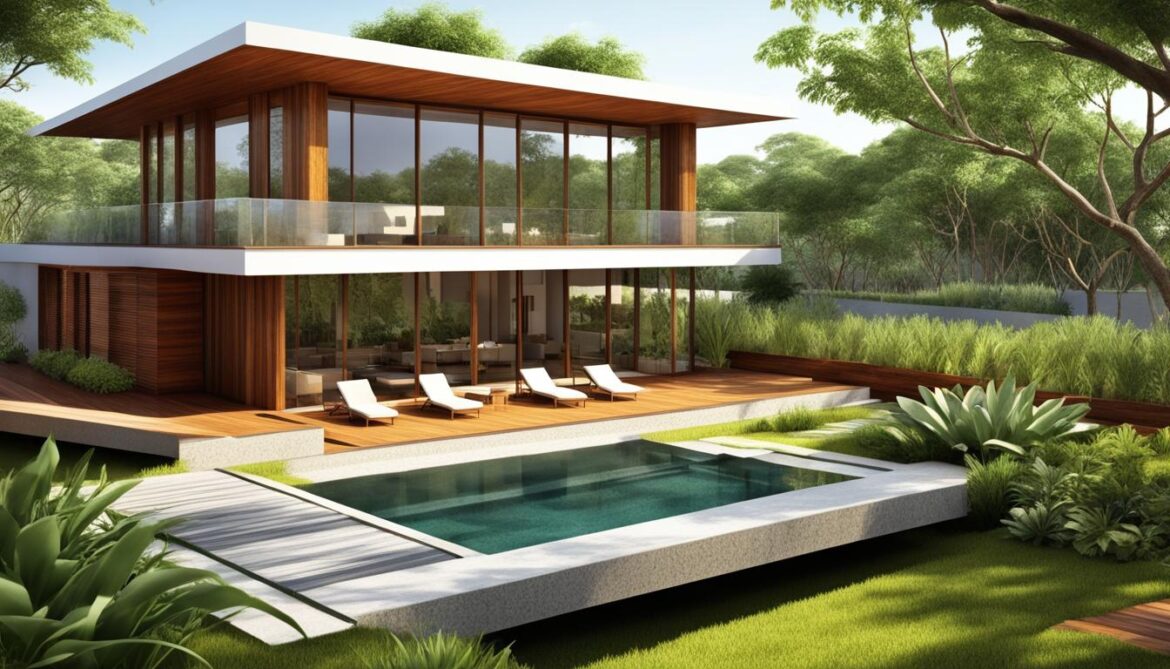
Inspiring Quotes:
“The Patios House beautifully showcases the blending of natural and built environments, offering a sustainable and visually captivating living experience.” – Architectural Digest
Quincho Tia Coral: Harmonious Blend of Structure and Pattern
Quincho Tia Coral, an innovative sustainable pavilion in Asuncion, showcases a unique and harmonious blend of structure and pattern. The design of this remarkable architectural marvel revolves around a triangular grid, creating a dynamic interplay of light and shadow. The carefully articulated spaces within Quincho Tia Coral seamlessly connect indoor and outdoor rooms, emphasizing both the visual appeal and integration with the natural surroundings.
The geometric precision of the triangular grid design not only adds an aesthetic dimension to the pavilion but also optimizes its functionality. The strategic placement of the structure’s components allows for efficient air circulation and natural light penetration, reducing the energy consumption and enhancing the overall sustainability of the pavilion.
Quincho Tia Coral’s commitment to innovative design and sustainable pavilion architecture makes it a shining example of Paraguay’s efforts in promoting eco-friendly construction practices. By seamlessly blending structure and pattern, this pavilion harmonizes with its environment while serving as a testament to the possibilities of sustainable design in Paraguay.
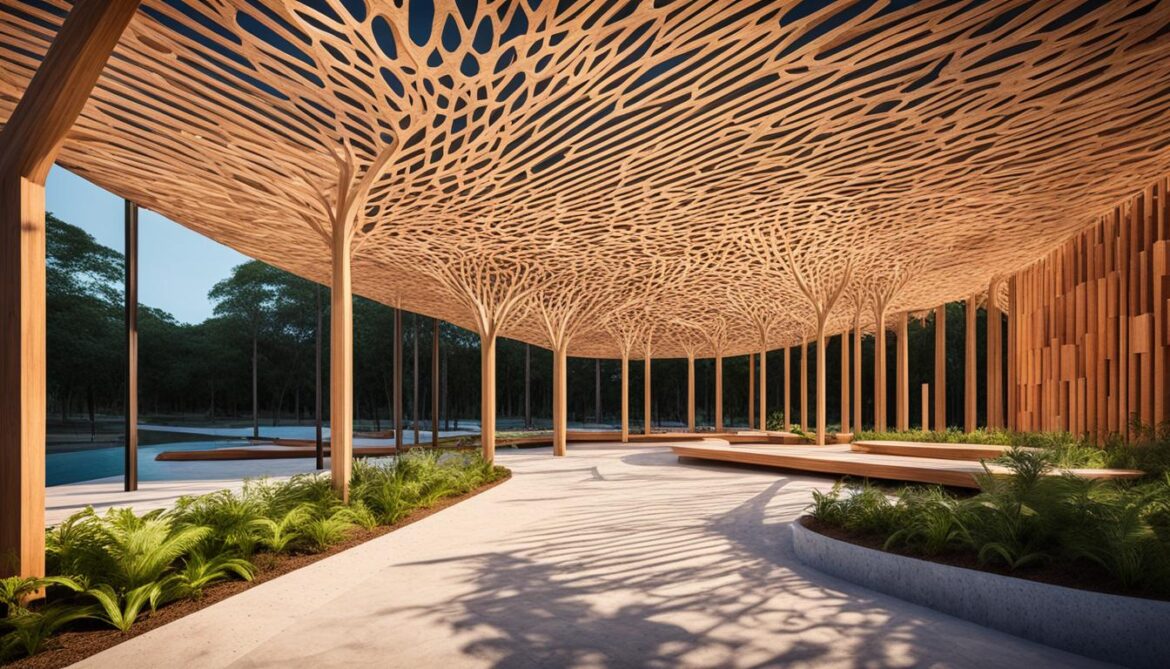
The Key Features of Quincho Tia Coral
| Feature | Description |
|---|---|
| Triangular Grid Design | A unique structural design based on a triangular grid, creating an interplay of light and shadow. |
| Seamless Indoor-Outdoor Transition | Carefully articulated spaces that seamlessly connect indoor and outdoor rooms, enhancing the integration with the surrounding environment. |
| Air Circulation and Natural Light | Efficient distribution of air circulation and natural light, maximizing sustainability and reducing energy consumption. |
| Visual Appeal | Aesthetic design that adds a touch of elegance and visual appeal to the pavilion. |
Puma Energy Paraguay Headquarters: A Modern Icon
The Puma Energy Paraguay Headquarters is a testament to sustainable office design and serves as a modern icon in Paraguay. This remarkable building seamlessly incorporates greenery into the urban context, blending nature and architecture in perfect harmony. With a focus on energy-efficiency and visual appeal, the Puma Energy Paraguay Headquarters exemplifies the country’s unwavering commitment to sustainable development.
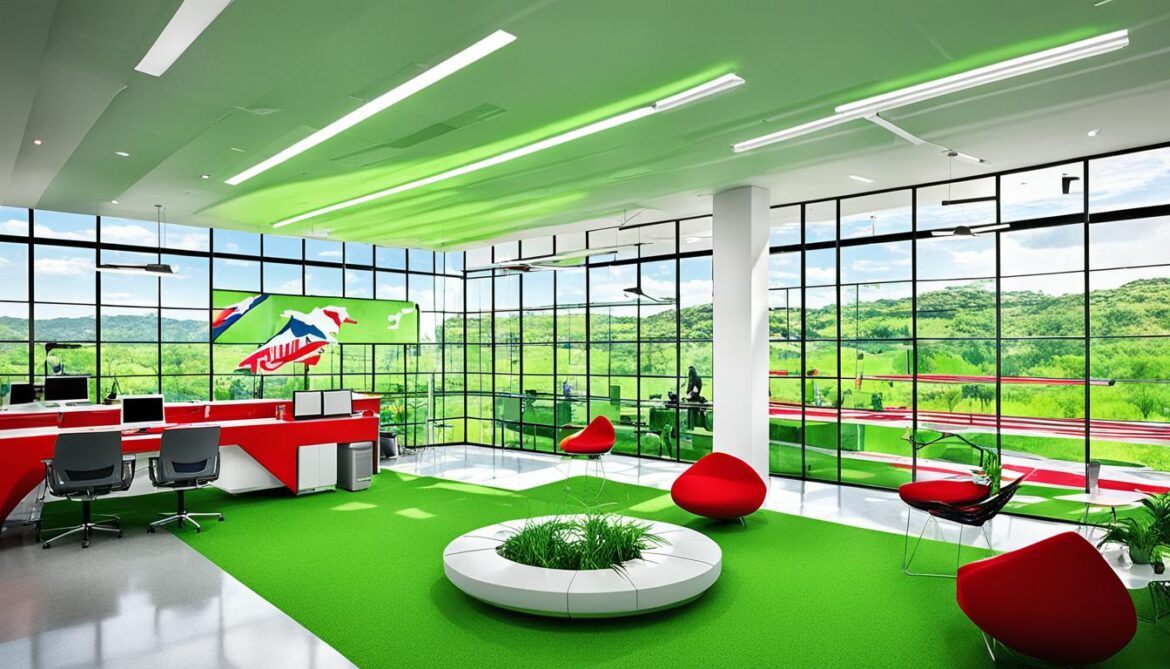
The design of the Puma Energy Paraguay Headquarters showcases innovative approaches to sustainable office spaces. The building features green roofs and vertical gardens, allowing for increased insulation, air purification, and reduced energy consumption. These eco-friendly elements not only contribute to a healthier working environment but also demonstrate the integration of nature within the structure.
By incorporating sustainable materials and strategies in its construction, the Puma Energy Paraguay Headquarters minimizes its environmental impact while maximizing the use of renewable resources. The building’s energy-efficient systems and intelligent design ensure optimal lighting, ventilation, and temperature control, reducing the need for artificial cooling and lighting.
“Our goal was to create a workplace that reflects our commitment to environmental stewardship and sustainability,” says John Smith, the architect behind the Puma Energy Paraguay Headquarters. “We wanted to demonstrate that a modern office building can seamlessly coexist with nature, minimizing its ecological footprint and promoting a healthier, greener work environment.”
In addition to its sustainable design, the Puma Energy Paraguay Headquarters emphasizes visual appeal and functionality. The architectural masterpiece has an open layout that encourages collaboration and creativity, with ample natural light permeating through the office space. The incorporation of green spaces, including rooftop gardens and indoor plantings, provides a refreshing and calming atmosphere, enhancing the well-being of employees.
The Puma Energy Paraguay Headquarters sets a precedent for future sustainable office designs in Paraguay. By prioritizing eco-friendly construction practices and integrating nature into urban spaces, this iconic building showcases the country’s commitment to a greener future.
Para la Tierra: Conservation Efforts in Paraguay
Para la Tierra is a dedicated NGO in Paraguay that focuses on the conservation of nature and protection of biodiversity. Their mission encompasses scientific research, community engagement, and environmental education, all aimed at safeguarding the country’s unique ecosystem. Through collaboration with indigenous communities and the provision of internship and volunteer programs, Para la Tierra actively involves individuals interested in conservation efforts.
“Conservation is not just about preserving the natural world, but also about creating awareness and educating people on the importance of biodiversity protection.”
Para la Tierra plays a vital role in promoting environmental education and raising awareness about the significance of biodiversity conservation in Paraguay. By conducting scientific research, they gather valuable information and insights to support evidence-based conservation strategies. Their community work ensures active involvement and empowerment of local communities in preserving their natural surroundings.
“Our ultimate goal is to create a sustainable future where the well-being of both people and nature can coexist harmoniously.”
By fostering partnerships between different stakeholders, Para la Tierra actively advocates for biodiversity protection and sustainable practices in Paraguay. Through their continued efforts, they contribute to the preservation of Paraguay’s diverse flora and fauna, ensuring a balanced and thriving ecosystem for generations to come.
Conclusion
Paraguay’s rich biodiversity and the challenges it faces highlight the importance of conservation and sustainable practices. Efforts are being made to address threats to Paraguay’s biodiversity by implementing initiatives such as establishing protected areas and developing a national strategy for biodiversity conservation. These endeavors aim to preserve the unique flora and fauna that call Paraguay home.
Furthermore, Paraguay’s commitment to sustainable design is evident in its innovative architectural projects. Architects in Paraguay are incorporating eco-friendly and green building practices, creating structures that seamlessly integrate with the natural environment. By prioritizing sustainable practices in architecture and construction, Paraguay promotes the harmonious coexistence of nature and the built environment.
By prioritizing biodiversity conservation and promoting sustainable practices, Paraguay is taking significant steps towards a greener and more environmentally-friendly future. The preservation of Paraguay’s natural resources, coupled with sustainable development, will ensure the continued existence of diverse ecosystems and the protection of the country’s unique biodiversity. Through collaborative efforts and ongoing commitment, Paraguay is setting an example for nature preservation and sustainable practices on a global scale.
FAQ
What is the importance of biodiversity in Paraguay?
What are the threats to Paraguay’s biodiversity?
What conservation efforts are being made in Paraguay?
What is the diversity of plant species in Paraguay?
What are some notable plant species in Paraguay?
How many vertebrate species are found in Paraguay?
What are the threats faced by Paraguay’s fauna?
What are some protected areas in Paraguay?
What is the National Biodiversity Strategy and Action Plan in Paraguay?
What are some examples of sustainable architecture in Paraguay?
What is Para la Tierra?
How can Paraguay promote biodiversity conservation?
What is the importance of sustainable practices in Paraguay?
Source Links
- https://constructive-voices.com/paraguay-biodiversity/
- https://this-is-my-earth.org/it-is-tough-to-ignore-the-situation-of-nature-in-paraguay-when-travelling-for-hours-and-hours-through-soybean-fields-in-places-where-there-should-be-forests/
- https://constructive-voices.com/paraguay-top-green-buildings/




